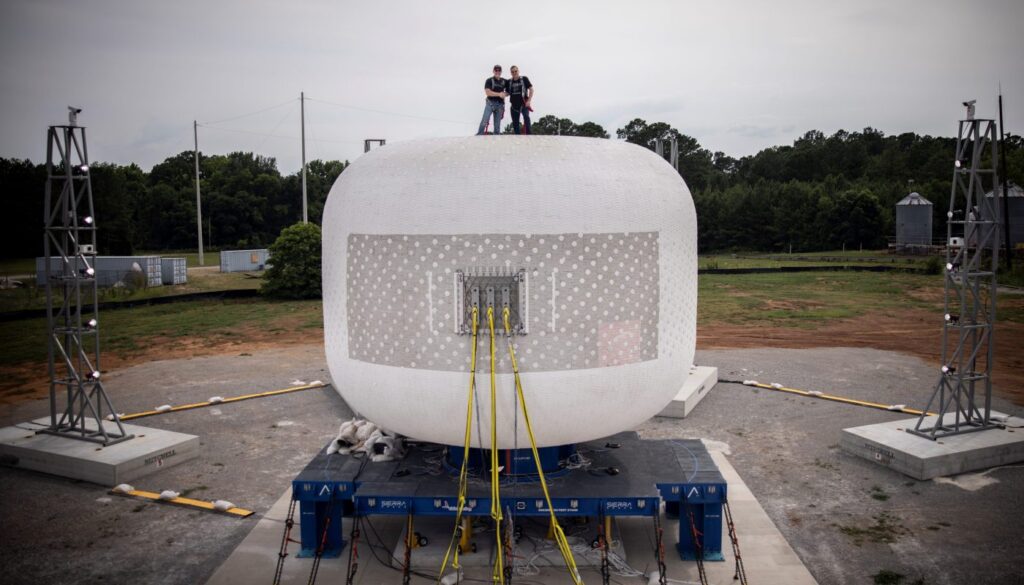Sierra Space conducted its second full-scale burst test of an inflatable module prototype. In the future, it is planned to be used to create a commercial orbital station Orbital Reef.

The test took place June 18 at the Marshall Space Flight Center. Its purpose was to test the module’s ultimate strength and to study how its shell, made of high-strength vectran fiber and other materials, would behave.
During the test, the pressure inside the module, which had an internal volume of 300 cubic meters, gradually rose. When it reached a level of 510 kilopascals (about five times the pressure of Earth’s atmosphere), the shell burst. This far exceeds NASA’s recommended level of 419 kilopascals (a maximum operating pressure of 105 kilopascals multiplied by a safety factor of four). The value obtained during the test is close to the results of a similar test performed in December. Then the module burst when the pressure inside it reached 530 kilopascals.
The company called the test result an absolute success, proving that it is possible to launch a module comparable in volume to the ISS in a single launch. Next year, the company plans to start testing an even larger 500 m3 module.
Sierra Space’s projected inflatable LIFE module is to be the crew residence for the commercial orbital station Orbital Reef. Boeing and Blue Origin are also involved in its development. In addition, the company is considering the idea of using such a module as an autonomous spacecraft.
Earlier we told the story about the Sierra Space-built Dream Chaser cargo spaceplane being delivered to Cape Canaveral.
According to Spacenews


